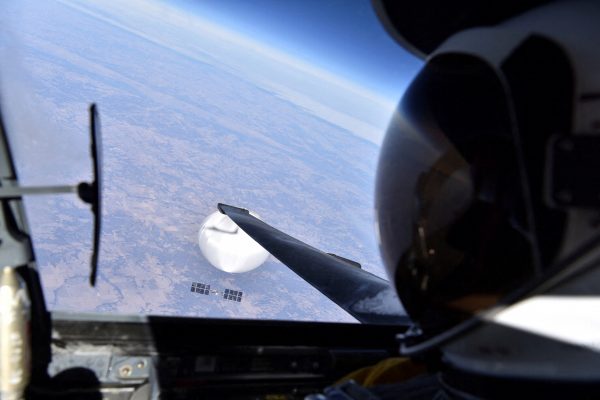It is worth recalling the speed with which the episode unfolded. The presence of the balloon over US airspace was publicly revealed on Thursday 2 February. The next day, Beijing acknowledged that it was a Chinese weather balloon that had drifted off course and expressed ‘regrets’ for this ‘unintended’ and ‘unexpected situation’. But US Secretary of State Antony Blinken postponed a planned visit to Beijing, which was intended to be a follow up on discussions between Chinese and US leaders at the G20, on the grounds that China’s ‘clear violation of US sovereignty’ had ‘undermined the purpose of the trip.’
On Saturday 4 February 2023, only 48 hours after the story broke, a US Air Force jet destroyed the balloon with an air-to-air missile. Beijing expressed ‘strong dissatisfaction’ with this ‘use of force’ and accused Washington of ‘overreacting.’
We now know that this rapid sequence of events reflected a rush to judgment and action before the facts were clear. This was complicated by the false Chinese claim that the airship was a weather balloon, and Washington’s belated acknowledgment of the possibility that it had in fact drifted off course.
In the meantime, alarm on the US side and evasion on the Chinese side allowed the situation to escalate, derailing what was supposed to have been a key opportunity for stabilising US–China relations. When Blinken met with China’s top diplomat Wang Yi two weeks later at the Munich Security Conference, they accomplished little more than an exchange of complaints about how the balloon incident had been handled.
This mutual distrust and miscomprehension bodes ill for any US–China rapprochement, at least in the near term. Both sides appear more inclined to score points against each other than to acknowledge their mistakes or make concerted efforts toward the kind of constructive bilateral engagement that Biden and Xi talked about when they met in November 2022. Instead, both Washington and Beijing now appear inclined to treat the balloon episode as a new grievance to leverage against each other.
All of this reflects the adversarial dynamic of the US–China relationship and both sides’ preoccupation with strategic competition at the expense of opportunities for cooperation. The balloon episode has also reinforced their exaggerated assessments of each other’s strategic intentions. This will make it even harder to pursue mutual understanding and to avoid what many observers are already characterising as a ‘new Cold War’.
The incident also increases the risk of escalation in the security realm. Like most countries, China and the United States routinely spy against each other and this is tacitly understood as long as traditional patterns of espionage are maintained. But the balloon, which apparently exposed a Chinese intelligence program that would violate international law by operating within other countries’ territorial airspace, generated heightened public attention and political pressure to respond forcefully.
At the same time, the balloon incident fuelled Chinese anger at the nature of the US response, mounting pressure for Beijing to be similarly vigilant. A Chinese military spokesman said that Beijing ‘reserves the right to take necessary measures to deal with similar situations,’ hinting at potential retaliation against US intelligence operations.
One of the most problematic aspects of the balloon incident was the extent to which polarised US politics fuelled Washington’s response — a factor which is likely to continue driving a confrontational US approach to China. The new US House of Representatives’ Select Committee on the Strategic Competition between the United States and the Chinese Communist Party, chaired by Republican politician Mike Gallagher, is positioning itself to frame the discourse on US policy toward China — and to do so along adversarial and ideological lines.
An incident sparked by an ill-conceived and ill-timed Chinese surveillance balloon that probably was blown off course quickly escalated into a diplomatic crisis and military action. This escalation can be attributed to exaggerated fears and domestic politics on the US side, diplomatic deception and bureaucratic lapses on the Chinese side and strategic distrust and failure to communicate on both sides.
Washington and Beijing clearly have multiple obstacles to overcome in their pursuit of peaceful coexistence. It is imperative that they reinvigorate the process of substantive engagement that Biden and Xi agreed to at their last meeting in 2022, and supplement that with serious efforts to establish bilateral mechanisms for crisis management.
Paul Heer is a Non-Resident Senior Fellow at the Chicago Council on Global Affairs. He served as the US National Intelligence Officer for East Asia from 2007 to 2015. He is the author of Mr. X and the Pacific: George F. Kennan and American Policy in East Asia.

